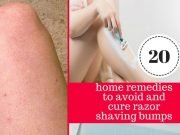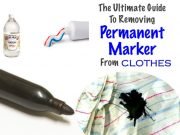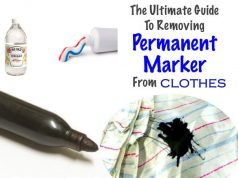Taking immediate and prompt action is very important when you are dealing with damage of your house and property from water. As a home owner, one of the most destructive and common problems your property might face is damage from flooding by water. The damage can be extremely slow and minor like water spots, or can be catastrophic and dangerous like weakening of the structure.
Water flooding can be caused by various issues, right from burst pipes to leaking taps. Flooding by excess water can cause serious damage to your home. It can cause electrical hazards, cause damage to your home’s furnishings and structure and could also lead to growth of mold which can turn out to be really hazardous. All that it requires is a few inches of water in your home to cause some serious harm and damage. Water flood can happen in the blink of a few seconds.
What is water damage restoration?
Water damage is an umbrella term for the losses that can be caused by the water intruding your home. It can lead to destruction of expensive household materials and systems. You may or may not have an insurance policy when it comes to water damage. Hence, you need to act immediately to get rid of the excess water. The process and measures adopted to get the water out is known constitute water damage restoration.
The Most Common Causes Of Water Damage
Following are some of the reasons why you might have a water flooding situation at your home:
Clogged or blocked drain pipes
Water from overflowing drain pipes, also called ‘black water’, is extremely harmful and unsanitary. It can lead to severe sickness or discomfort.
Rain gutters filled with debris
This kind of water is also extremely unsanitary and should be removed as soon as possible or it can result in health problems to you or your family members.
Leaking water heaters
The water coming out of leaking water heater are usually classified to be ‘clean water’. They are known not to pose any threat to humans but can still cause damage to your household properties.
Faulty washing machine pipe
Many a times the water machine pipe is leaking or is faulty and the water from the machine can flood your entire house. This can lead to some serious property damage.
Ideas/solutions for water damage restoration:
Following are some ideas and solutions that you can use when faced with water flooding and damage:
1. Remove valuable property
The moment you see your home flooded due to water leakage or for any other reason, calm yourself and remove all the valuable household properties that can get damaged due to water accumulation. Not always can you apply for insurance for costs incurred due to damage from water. In such case, the most intelligent thing is to remove all the goods and properties and systems from harm’s way. That way you will end up spending a lot less in the restoration process.
2. Seal the area
After identifying the water source you need to seal the area. If it’s a pipe leakage, it would be comparatively easier to do. Otherwise you would have to turn the water main off and cut the problem from the source. If you live in a collective apartment it would be a difficult thing to do. Hence, try sealing the leakage.
3. Identify the source of water flooding
The next step is to find the source of the water flooding so that you can make an attempt to stop more water from coming out. Inspect your house carefully to find out the source. Through thorough inspection, you can determine the category and class of the water flooding your house. Finding out the category and class will help you or the experts come up with the best and the most effective restoration plan for your house.
Classes of water damage:
Class 1: Class 1 is the scenario where damage has restricted to only one room and the moisture absorption is extremely less. This is the least level of water damage.
Class 2: In this class, a room has been damaged entirely and the walls and the carpets have absorbed the water and been soaked.
Class 3: In this level, the walls of your house have completely absorbed the moisture from the water and may even have gone through the roof or ceiling. This kind of damage is considered to be the worst kind.
Class 4: In class 4, experts in water damage restoration have to be called. In this level, all your expensive household properties, systems and the structure of the house is harmed. Materials such as concrete, stone and hardwood have been seriously damaged.
Water damage categories
Category 1: This category is referred when the water damage is made from sources supplying clean water such as leaking pipes, leaking faucets etc. This water can go from category 1 to category 2 or 3 if the water is left sitting for too long.
Category 2: This category involves the damage caused by ‘grey water’, such as water leakage from faulty washing machine pipes or the dishwater. This water contains detergents. Damage caused from urine overflow from toilets is also a category 2 damage.
Category 3: This category involves water damage from extremely unsanitary source. The water from this category can cause death, disease or some kind of illness. The water in this category mainly comes from river flooding, standing water or the sewage.
4. Close the water main
The next intelligent thing to do would be to close the water main. This will help if the flooding was due to some sort of leakage. Once the water main is close, you need to assess the damage already done. Once you assess the damage caused on your home and/or health, you need to calm yourself and chalk a good restoration process. Panicking will do more harm than good in such situation. If the damage done is less, you can start the restoration process, otherwise you will have to wait till the experts arrive and start their work.
5. Extract the excess water
The next step would be to get the standing water out. You need to extract the excess water left from the flooding once the source and the cause has been identified. If you let the water sit in your house for a longer period of time, it might end up damaging the walls, carpets and furniture. Structure integrity damage, warping and mold starts developing if you don’t treat the excess water and the longer it sits, the worse is the damage.
Removal of excess water would require some special equipment. Many times, vacuums and mops do not do the trick. You would have to get help from water damage restoration experts to properly get rid of the standing water, especially from places and corners difficult to reach.
6. Install drying equipment
After removal of excess water, your house walls and floors might look dry at first glance but if you touch them, they would appear wet. It is very crucial that you install drying equipment to dry out your house. This will help you prevent mold and severe damage to property and deterioration of the house walls and structure. You can mop out most of the water through a drain or an open door. But if the water flood is in your basement, you will have to use equipment like pump or shopvac to remove the water and then you will have to dry out the room.
Houses made with wood and drywall will retain a lot of water as these materials are extremely porous. This retained water will cause the materials to swell, warp and break down. The experts can manipulate relative humidity and temperature in the house to get rid of the moisture. They use equipment like dehumidifiers and industrial air movers to get rid of the retained water. Progress is monitored using moisture meters until the house material returns back to its normal state.
7. Cleaning
Once the house is dried completely and the excess moisture is removed from the walls and structure, the cleaning process begins. The water can go to places that can’t be easily reached. These places need to cleaned properly to prevent any property damage. For this you would need to use expert products on your floors, walls and furniture. With water flooding, a lot of contaminations occur. The water damage can be categorised under three levels, white, grey and black.
8. Look for mold
This process takes place with the cleaning process. You need to look for mold while cleaning the house to avoid any health risks. Water retention in a particular place for a long period of time often leads to the formation of molds which is an added headache. To avoid this situation, take necessary precautions as soon as possible and carefully look at every nook and corner of the house. Mold of any kind has the capability to affect your health and cause problems, though such dangerous molds don’t generally occur often. You need to use proper mold identification methods like initial air quality testing and also use expert mold removal tactics.
9. Disinfect and sanitise the area
Once you clean the affected place and remove the molds, it is time to disinfect and sanitize the area. You will need to incorporate an effective odor removal process. This step is very important to make your house liveable again. Water damage can turn out to be extremely pungent leaving an uncomfortable and irritating musty smell all over the house. To avoid this state, the house has to be sterilised and sanitised properly. The repair process would not start without this process. The walls, floors and especially the nook and corners should be sanitised with proper techniques and products containing anti-bacterial and antimicrobial agents or disinfectants. Air scrubbers can be used to effectively remove moisture and particles from the air.
10. Rebuild affected areas
Once you are able to mitigate the water damage and your house has been successfully returned to an almost normal state, you need to look for property and structural damages which need immediate attention. This is the final step in the restoration process. You will need to hire experts for this process who will assess the damage and try to return your house to an almost pre-water-damage stage. Never hesitate to call an expert for this. Any hesitation on your part and the water will spread deeper and further into the already affected materials and also increase the risk of molds.
Water damage restoration experts follow an extensive step by step procedure to get your house or basement back to its normal self. Restoration might also just require a few minor and small repairs such as installing a new carpet, painting, floor tile repair, repair of hardwood floor, replacing your drywall or reconstruction of some of the areas or rooms in your home or business place. In case you home is damaged with water flooding, you will be required to employ a few protective measures such as placing a roof tarpaulin, temporary fencing etc.
Water damage Do’s and Don’ts
Do’s:
• Remove wet carpets, rugs and other kinds of floor coverings
• Use dehumidifiers if the temperature outside is more than 60 degrees.
• Use fans to assist in drying and air circulation
• Remove as much excess water as possible by blotting and mopping
• Wipe your furniture dry completely
• Leave your heat on if the water damage occurs during the winters and use AC if in summer
• Spread out damp books outside in the sun to dry
• Remove wet clothes and fabrics and dry them as soon as possible
• Turn off your electricity
Don’ts
• Don’t use your ordinary household vacuum cleaner to remove the excess water
• Don’t take the risk of using electrical equipment on wet floors and wet carpets.
• If the electricity is on, don’t go into any room with standing water as you might get an electric shock
• Don’t walk on wet surfaces
• Don’t place any newspaper on wet surface.

































